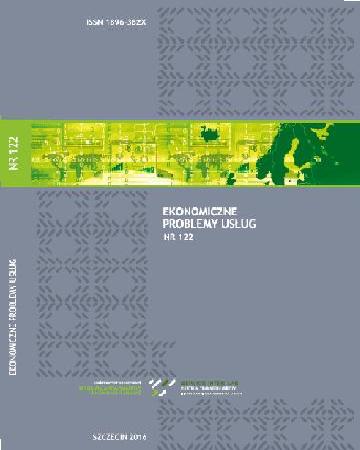
ISSN: 1896-382X
eISSN: 2353-2866
OAI
DOI: 10.18276/epu.2016.124-03



Issue archive /
nr 124 2016
A formal model for planning and controlling search and rescue actions at sea
| Authors: |
Dario
Medić
University of Split Faculty of Maritime Studies Anita Gudelj University of Split Faculty of Maritime Studies Maja Krćum University of Split Faculty of Maritime Studies |
| Keywords: | UAV Petri net modeling conflict avoidance |
| Data publikacji całości: | 2016 |
| Page range: | 11 (27-37) |
Abstract
Recently, during search and rescue actions at sea, Unmanned Aerial Vehicles (UAVs) have been used. Onboard decision capabilities allow an UAV vehicle to reach the entity that is in distress at sea. UAVs are launched within a few minutes to begin search actions. When the exact location of the irtjured entity is detected, a rescue action should begin. According to the collected information about the vessel's position, manoeuvrability, and velocity, the control centre determines which vessel is to be engaged in the rescue action.
This highly autonomous system can be described as a discrete event system. Certain states of such systems, such as collisions, are undesirable. This paper presents implementation of information flow to supervise, control, and monitor the behaviour of the UAVs during the search, to avoid collisions and to communicate with computational onboard sub-systems. Planning algorithms and coloured Petri nets are used to specify different phases of the mission execution. When a certain UAV detects an injured entity, alternative encoded reactions are triggered and a control centre starts implementing the rescue plan.
Download file
Article file
Bibliography
| 1. | Alejo, D., Dıaz-Banez, J.M., Cobano, J.A., P´erez-Lantero, P., Ollero, A. (2013). The velocity assignment problem for conflict resolution with multiple aerial vehicles sharing airspace. Journal of Intelligent & Robotic Systems, 69 (1), 331‒346. |
| 2. | Capar, R. (1989). Traganje i spašavanje ljudi na moru. Rijeka: Fakultet za pomorstvo i saobraćaj. |
| 3. | IAMSAR Manual (2010). Mobile Facilities. Vol. 3. London–Montreal: IMO Publishing. |
| 4. | Jensen, K. (1992). Coloured Petri Nets: Basic Concepts, Analysis Methods and Practical Use, vol. 2., Heidelberg: Springer. |
| 5. | Kezić, D., Gudelj, A. (2010). Design of River System Deadlock Avoidance Supervisor By Using Petri Net. PROMET, 22 (3), 215‒221. |
| 6. | Maza, I., Caballero, F., Capitan, J., Martinez-de Dios, J., Ollero, A. (2011). A distributed architecture for a robotic platform with aerial sensor transportation and self-deployment capabilities. Journal of Field Robotics, 28 (3), 303–328. |
| 7. | MERSAR Manual (1993). London: IMO Publishing. |
| 8. | Murata, T. (1989). Petri Nets: Properties, Analysis, and Applications. Proceedings of the IEEE, 77 (4), 541–580. |
| 9. | Ribarić, S., Šnajder, J. (2005). Mapping Petri Net-Based Temporal Knowledge Representation Scheme into CP-Net Model. Proceedings of the 28th International Convention: MIPRO 2005 Opatija, 134‒139. |
| 10. | Skrzypietz, T. (2012). Unmanned Aircraft Systems for Civilian Missions. Potsdam, Deutschland: Brandenburg Institute for Society and Security. |